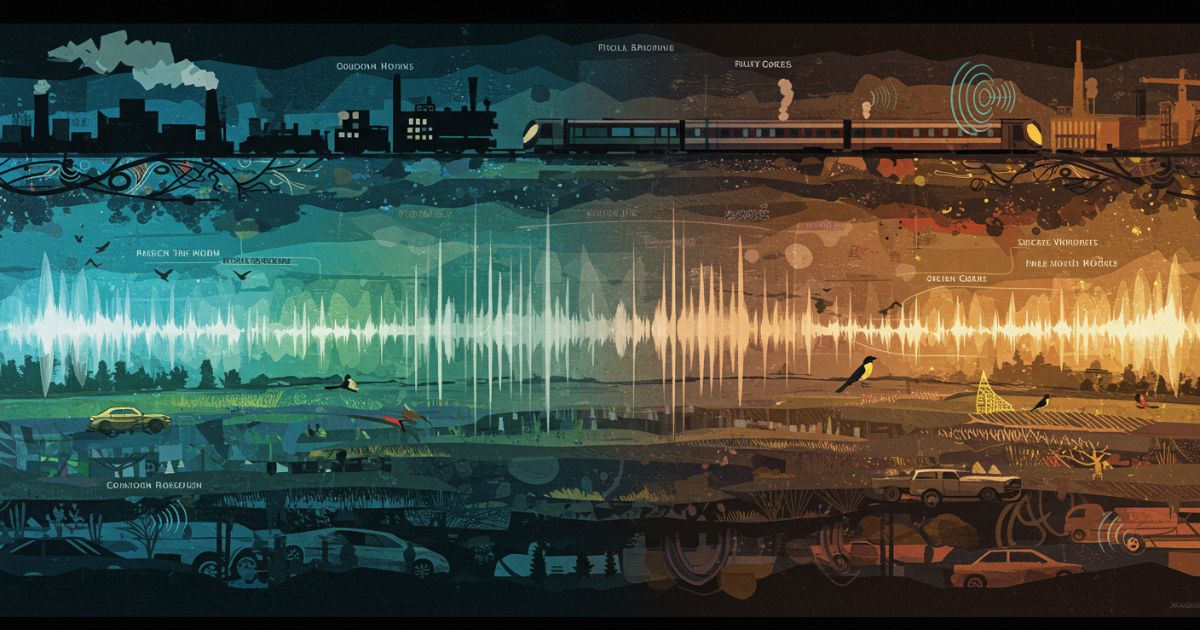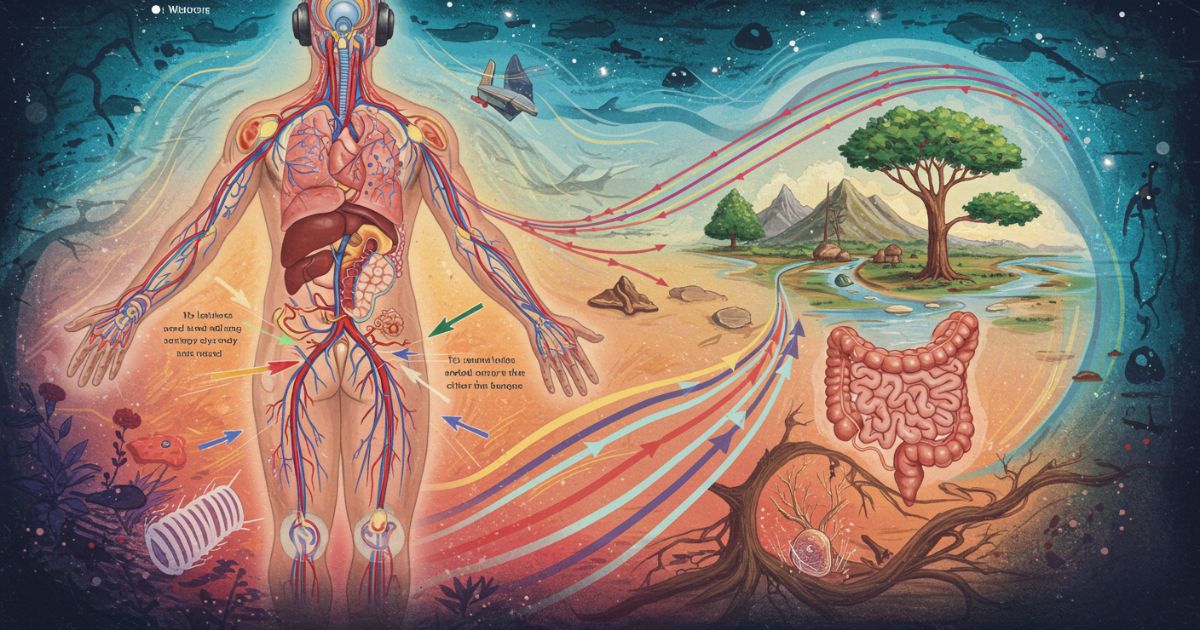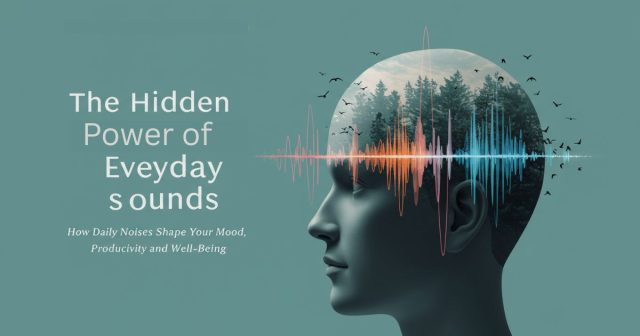From the gentle rustle of leaves to the buzz of a busy street, sound is an ever-present force in our lives. While we often pay attention only when noise becomes intrusive, research shows that even subtle everyday sounds can influence our emotions, cognition, and health.
Here, we explore the science behind common noises, their psychological and physiological impacts, and practical strategies to harness sound for enhanced focus, relaxation, and overall well-being.
The Science of Sound: How Our Brains Process Noise
Sound travels as vibrations in the air, reaching our ears and vibrating the eardrum. These mechanical oscillations are converted into electrical signals by hair cells in the inner ear, then transmitted to the auditory cortex in the brain. But beyond mere perception, various neural networks—especially those involved in emotion (the limbic system) and attention (the prefrontal cortex)—are activated by auditory stimuli.
Key concepts:
- Frequency: Measured in hertz (Hz), frequency determines pitch. High frequencies (like birdsong) can be perceived as pleasant, while very low frequencies (infrasound) may cause discomfort.
- Amplitude: Measured in decibels (dB), amplitude relates to loudness. Chronic exposure to high dB levels can harm hearing and elevate stress hormones.
- Timbre: The quality or color of a sound, which helps us distinguish a friend’s voice from background noise.

The Everyday Soundscape: Common Noises and Their Effects
Our acoustic environment, known as the soundscape, comprises natural sounds (such as birds, wind, and water), human-made ambient sounds (like traffic hum and appliances), and focused auditory cues (including notifications and alarms). Each category can have unique effects on our mental state:
- Natural Sounds: Studies show that exposure to birdsong, flowing water, and wind through trees lowers blood pressure, reduces cortisol levels, and enhances feelings of calm.
- Ambient Human-Made Sounds: Continuous low-level urban hum can either be a neutral background or a stressor, depending on individual sensitivity and context.
- Functional Sounds: Phone pings, keyboard clicks, and machine whirs can fragment attention. Yet predictable, rhythmic sounds (like a ticking metronome) may aid focus for some people.
Sound and the Brain: Psychological Insights
How do sounds shape mood, memory, and behavior? Here are three mechanisms neuroscientists highlight:
- Emotional Conditioning: Over time, we learn to associate certain sounds with emotional experiences. A comforting song from childhood can trigger nostalgic joy, while a dentist’s drill may provoke anxiety.
- Attention Modulation: Unexpected or loud noises activate the brain’s salience network, diverting attention from tasks. Conversely, gentle background sound—often called white noise—can mask distracting intrusions and improve concentration.
- Memory Encoding: Soundscapes influence how we encode and retrieve memories. Research indicates that environments with moderate ambient noise (around 50–70 dB) can enhance creative problem solving by promoting abstract thinking.
Sound and Physical Health: Beyond Ears and Nerves

Chronic noise exposure is not just an auditory issue. The World Health Organization links prolonged noise pollution to:
- Elevated stress hormone (cortisol) levels
- Increased risk of hypertension and cardiovascular disease
- Disrupted sleep quality and circadian rhythms
On the flip side, targeted sound therapies—such as binaural beats, gentle nature tracks, and guided meditation audio—have been shown to:
- Reduce anxiety and depressive symptoms
- Enhance sleep onset and depth
- Support pain management through relaxation responses
Harnessing Sound for Well-Being and Productivity
You don’t need expensive equipment or a soundproof booth to benefit from positive acoustics. Try these science-backed strategies:
Curate Your Sound Environment
Identify sounds that uplift you—whether it’s ocean waves, classical piano, or ambient coffee-shop chatter—and build playlists around them. Many streaming services and apps offer focus or relax mixes tuned to specific decibel ranges for concentration or calm.
Embrace Periodic Silence
Short breaks of complete quiet (even 1–2 minutes) can reset sensory overload. Consider a sound fast between intense work sessions. Find a quiet room, step onto a balcony, or close your eyes and tune out for a moment.
Try Binaural Beats and Isochronic Tones
Binaural beats occur when two slightly different frequencies are played separately to each ear, inducing brainwave entrainment. Research suggests these can promote relaxation (theta waves, 4–8 Hz) or alertness (beta waves, 13–30 Hz).
Use Noise-Masking Devices
White noise machines, nature-sound generators, or noise-cancelling headphones help mask disruptive background sounds—ideal for open offices or urban dwellings.
Incorporate Intentional Sound Breaks
Schedule short listening sessions featuring uplifting soundtracks or guided audio meditations to help you unwind. Apps offering daily sound rituals can remind you to pause, breathe, and recalibrate your mental state.
Case Studies and Real-World Examples
Numerous organizations now integrate sound design to boost performance and well-being:
- Hospitals: Calming nature recordings in waiting areas reduce patient stress and perceived wait times.
- Airports: Relaxation zones use ambient bird and water sounds to counteract travel fatigue.
- Offices: Smart soundscaping systems modulate ambient noise dynamically, lowering workplace anxiety and enhancing focus.
Conclusion: Listening as a Path to Better Living
Everyday sounds are more than background filler—they shape our thoughts, feelings, and physical health in profound ways. By becoming intentional listeners and curators of our acoustic environment, we can harness the hidden power of sound to boost productivity, reduce stress, and enrich daily life. Much like everyday scents, which influence mood and memory, sounds also play a powerful role in shaping how we experience the world. Next time you put on your headphones or step outside into the world, pay attention: the right sound at the right time might be just what you need to thrive.
FAQs
Q1: Can everyday noise really improve creativity?
Yes—moderate ambient noise (around 50–70 dB) has been linked to enhanced creative problem solving by encouraging abstract thinking patterns.
Q2: Are white noise machines safe for daily use?
For most people, white noise at moderate volumes is safe and can aid sleep and concentration. Keep volume below 60 dB to protect hearing.
Q3: How do I choose the best sound for focus?
Experiment with different types—nature sounds, instrumental music, or binaural beats—and gauge your productivity. Apps that measure focus can help identify your ideal acoustic profile.
Q4: Can silence have negative effects?
Short periods of silence are restorative, but prolonged isolation from sound may increase anxiety for some individuals. Balance quiet breaks with gentle auditory stimulation.
Q5: What’s the easiest way to start sound therapy at home?
Begin with free or low-cost apps offering guided soundscapes. Pair them with deep-breathing exercises or mindfulness to maximize relaxation benefits.









